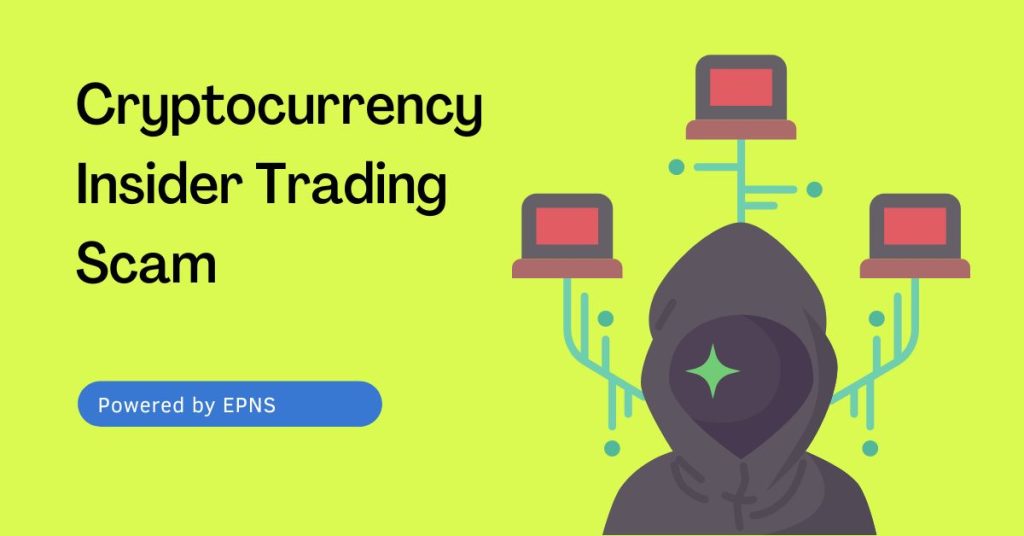The Wahi brothers got arrested on Thursday morning in Seattle, they are to be presented in the United States District Court for the Western District of Washington.
Wahi brothers have made illegal gains of $1.5 million. They purchased tokens ahead of their listing on Coinbase and sold them later.
Two Indian brothers namely Ishan Wahi, 32, Nikhil Wahi, 26, and their Indian-American friend Sameer Ramani, 33 have been charged in the US in the first-ever cryptocurrency insider trading scheme in which they made ill-gotten gains. The charges may carry a maximum sentence of 20 years each. According to the Oklahoma US Attorney’s Office, they can be charged with $250,000 as a fine. The FBI is leading the case in collaboration with the Oklahoma City Police Department.
At the time of the fraud, Ishan was working as a product manager at Coinbase Global, US prosecutors confirmed on July 21. He worked at Coinbase from October 2020 till late May 2022. Ishan would tip off Nikhil and Ramani ahead of the announcements, sometimes just a few minutes before, between June 2021 and April 2022. At least 25 crypto-assests and information on trading were leaked in more than 10 announcements.
Currently, Ishan has been charged with two counts of wire fraud conspiracy and two counts of wire fraud.
Ishan and Ramani, 33, knew each other since 2013 as they had attended the University of Texas in Austin together. Records of frequent calls and text messages exchanged in 2021 and 2022 between them can be traced back. And they followed each other on social media.
Ramani is said to be currently in India according to the SEC complaint. He is a US citizen, and a resident of Houston.
Nikhil Wahi, 26, was an employee at Salesforce Inc. since 2017 and worked there as a senior product manager. He has refused to respond to an SEC witness summons for documents.
“Today’s charges are a further reminder that Web3 is not a law-free zone. Just last month, I announced the first-ever insider trading case involving NFTs, and today I announce the first-ever insider trading case involving cryptocurrency markets. Our message with these charges is clear: fraud is a fraud, whether it occurs on the blockchain or on Wall Street. And the Southern District of New York will continue to be relentless in bringing fraudsters to justice, wherever we may find them.” said Mr. Damian Williams, a U.S. Attorney
According to the filing, both Nikhil and Ishaan lived in Seattle. They have histories of financial transactions back and forth with each other. Nikhil deposited a $20,000 cheque from Ishan, purportedly a loan on February 11, 2021. And on March 1, 2021, Nikhil transferred $2,000 to Ishan. Nikhil also transferred crypto assets valued at $19,500 on April 17, 2022, from his Coinbase account to Ishan’s Coinbase account.
The three accused have reportedly deleted their Twitter, LinkedIn, and other social media accounts.
Tokens Traded by the accused
Over an almost 10-month period, these are the tokens that they have traded.
• AMP Tokens
Ethereum-based AMP Tokens were listed on June 8, 2021. They started doing insider trading with this one.
Two days before the listing of the AMP token on June 6, Ishan came to know about it.
In the gap of two days, a blockchain address linked to Ramani made several fund transfers worth about $30,650 for 700,000 AMP tokens. Ramani had bought another 1,165,000 AMP tokens for about $49,000 from a different blockchain address on the morning of June 8.
On the day of listing, AMP’s trading volume was more than three times and the price was up by 11 percent.
On June 10 and 11, they sold almost all of the AMP tokens they had purchased for Ethereum tokens valued at approximately $97,600, from both the addresses, constituting profits of approximately $17,950.”
• RLY (Rally)
When RLY was listed on Coinbase, the brothers applied a similar procedure in less than a week on June 14. The blockchain address used was Nikhil.
• DDX (DerivaDAO)
It is a decentralized exchange with its native token DDX built on the Ethereum blockchain. It was founded by Aditya Palepu. The three accused have again followed the same pattern inside trading DDX tokens.
• XYO (XYO Network)
Another Etheruem-based token that powers the XYO Network. It is a decentralized network of devices that anonymously collect and validate data on geography and information.
The trio did the same with this token as others.
• RGT (Rari Governance Token)
This again is another token built on the Ethereum blockchain and it powers the Rari Capital. A decentralized protocol for lending and borrowing assets. Ishan, Nikhil, and Sameer have yet done another insider trading with this tokens.
The above are some of the few tokens they traded. Tere are a lot of other crypto assets that the notorious 3 have fraudulently traded over a period of ten months.
COINBASE CONDEMS THE LITIGATION by SEC
Coinbase is the largest and most popular crypto asset trading platform in the US, with more than 98 million registered users.
In a blog post on July 21, Coinbase’s Chief Legal Officer Paul Grewal questioned SEC’s action.
“Seven of the nine assets included in the SEC’s charges are listed on Coinbase’s platform. None of these assets are securities. Coinbase has a rigorous process to analyze and review each digital asset before making it available on our exchange — a process that the SEC itself has reviewed. This process includes an analysis of whether the asset could be considered to be a security, and also considers regulatory compliance and information security aspects of the asset. To be explicit, the majority of assets that we review are not ultimately listed on Coinbase,” Grewal wrote.
Despite cooperating with the SEC on the investigation, the bureau instead of having a dialogue with the platform about the seven assets leaped to litigation, added Coinbase.
Grewal said, “The SEC’s charges put a spotlight on an important problem: the US doesn’t have a clear or workable regulatory framework for digital asset securities. And instead of crafting tailored rules in an inclusive and transparent way, the SEC is relying on these types of one-off enforcement actions to try to bring all digital assets into its jurisdiction, even those assets that are not securities.”
Disclaimer: The information provided in this article is solely the author’s opinion. The Content is for informational purposes only, you should not construe this information as legal, tax, investment, financial, or other advice. Do your own research and invest wisely.
Powered by EPNS



